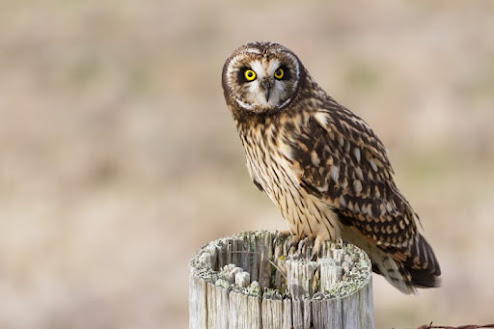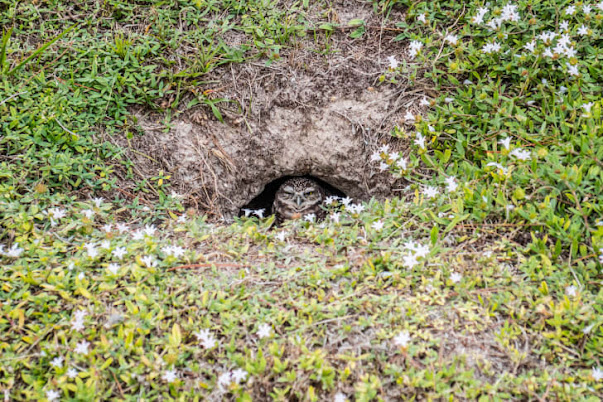15 MYSTERIOUS FACTS ABOUT OWLS
15 Mysterious Facts About Owls
Owls are enigmatic birds, by turns mysterious, lovable, or spooky, depending on whom you ask. With over 200 species living on every continent except Antarctica, owls have super-tuned senses that help them hunt prey all over the world. And they’re pretty darn cute, too.
1. OWLS CAN TURN THEIR HEADS ALMOST ALL THE WAY AROUND—BUT NOT QUITE.
3. OWLS HAVE SUPER-POWERED HEARING.
Owls are capable of hearing prey under leaves, plants, dirt, and snow. Some owls have sets of ears at different heights on their heads, which lets them locate prey based on tiny differences in sound waves. Other owls have flat faces with special feathers that focus sound, essentially turning their faces into one big ear. (The “ear tufts” on some owls are feathers and don’t have anything to do with their actual ears.)
4. OWL FLIGHT IS SLIENT.
Unlike most birds, owls make virtually no noise when they fly. They have special feathers that break turbulence into smaller currents, which reduces sound. Soft velvety down further muffles noise.
5. OWLS SWALLOW PREY WHOLE, THEN BARF UP THE INDIGESTIBLE BITS.
Getting killed by an owl is gruesome. First the owl grabs the prey and crushes it to death with its strong talons. Then, depending on the size of the meal, it either eats the prey whole or rips it up. The owl’s digestive tract processes the body, and the parts that can’t be digested, like fur and bones, are compacted into a pellet, which the owl later regurgitates. Sometimes, those pellets are collected for kids to dissect in school.
6. OWLS SOMETIMES EAT OTHER OWLS.
7. OWLS FEED THE STRONGEST BABIES FIRST.
As harsh as it sounds, the parents always feed the oldest and strongest owlet before its siblings. This means that if food is scarce, the youngest chicks will starve. After an owlet leaves the nest, it often lives nearby in the same tree, and its parents still bring it food. If it can survive the first winter on its own, its chances of survival are good.8. OWLS ARE MASTERS OF CAMOUFLAGE.
Many owls sleep in broad daylight, but the colors and markings on their feathers let them blend in with their surroundings.
9. SOME OWLS MAKE TERRIFYING HISSING NOISES.
Owls are enigmatic birds, by turns mysterious, lovable, or spooky, depending on whom you ask. With over 200 species living on every continent except Antarctica, owls have super-tuned senses that help them hunt prey all over the world. And they’re pretty darn cute, too.
10. ELF OWLS LIVE IN CACTI.
The smallest owl is the elf owl, which lives in the southwestern United States and northern Mexico. It will sometimes make its home in the giant saguaro cactus, nesting in holes made by other animals. But the elf owl isn’t picky and will also live in trees or on telephone poles.11. BURROWING OWLS TAKE OVER PRAIRIE DOG TOWNS—AND HUNT WITH POOP.
The long-legged burrowing owl lives in South and North America. One of the few owls that is active during the daytime, it nests in the ground, moving into tunnels excavated by other animals such as prairie dogs. They’ll also dig their own homes if necessary. Then, they'll surround the entrances to their burrows with dung and "sit at the burrow entrance all day long and it looks like they're doing nothing," University of Florida zoologist Douglas Levey told National Geographic. But they're not doing nothing: They're fishing. The poop is bait for dung beetles, one of the owls' favorite types of prey. "Everybody who studies burrowing owls knows they bring dung back to their burrows, and they know that burrowing owls eat a lot of dung beetles. But nobody had put two and two together," Levey, co-author of a 2004 study announcing the behavior, said
12. OWLS SERVE AS NATURAL PEST CONTROL FOR FARMERS.
Owls eat a lot of rodents. A single barn owl family will eat 3000 rodents in a four-month breeding cycle. One owl can eat 50 pounds of gophers in a year. Many farmers are installing owl nesting boxes in the hopes that owls will clean out pests like gophers and voles from their land. This natural form of pest control is safer and cheaper than using poison, and it’s better for the owls too. Many owls die each year from eating rodents that have been poisoned.
13. OWLS WERE ONCE A SIGN OF VICTORY IN BATTLE.
14. OWLS ALSO SYMBOLIZED DEATH.
From ancient times on, owls have been linked with death, evil, and superstitions. Many cultures saw owls as a sign of impending death. For example, an owl was said to have predicted the death of Julius Caesar. They’ve also been associated with witches and other so-called evil beings. While this may sound like Halloween fun, many cultures still have superstitions about owls and in some places, owls are killed based on these beliefs.
15. OWLS AND HUMANS GENERALLY GET ALONG.
Owls have been popular since ancient times. They show up in Egyptian hieroglyphs and in 30,000-year-old cave paintings in France. Falconers have used owls since the Middle Ages, although not as commonly as other birds. Today, we still love owls. Though it’s illegal to keep them as pets in the United States, they’re intelligent and sociable. (Most of the time, anyway—owls can also attack humans when feeling threatened.)














Comments
Post a Comment